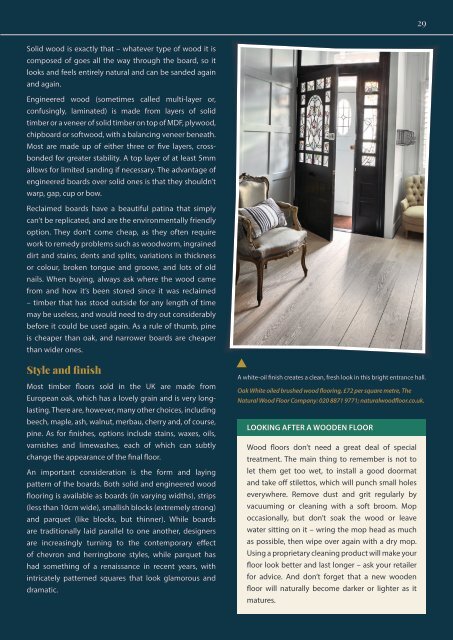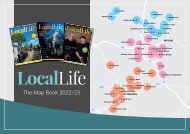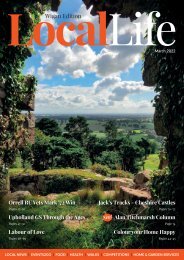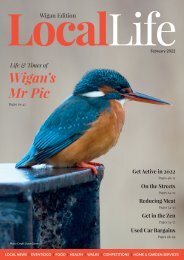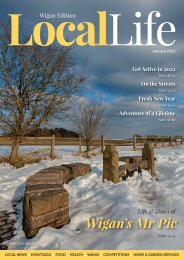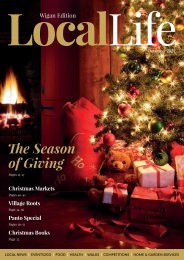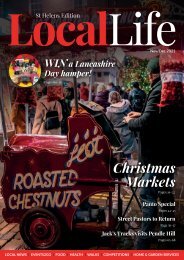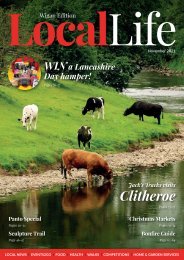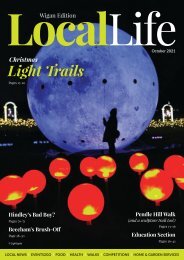You also want an ePaper? Increase the reach of your titles
YUMPU automatically turns print PDFs into web optimized ePapers that Google loves.
29<br />
Solid wood is exactly that – whatever type of wood it is<br />
composed of goes all the way through the board, so it<br />
looks and feels entirely natural and can be sanded again<br />
and again.<br />
Engineered wood (sometimes called multi-layer or,<br />
confusingly, laminated) is made from layers of solid<br />
timber or a veneer of solid timber on top of MDF, plywood,<br />
chipboard or softwood, with a balancing veneer beneath.<br />
Most are made up of either three or five layers, crossbonded<br />
for greater stability. A top layer of at least 5mm<br />
allows for limited sanding if necessary. The advantage of<br />
engineered boards over solid ones is that they shouldn’t<br />
warp, gap, cup or bow.<br />
Reclaimed boards have a beautiful patina that simply<br />
can’t be replicated, and are the environmentally friendly<br />
option. They don’t come cheap, as they often require<br />
work to remedy problems such as woodworm, ingrained<br />
dirt and stains, dents and splits, variations in thickness<br />
or colour, broken tongue and groove, and lots of old<br />
nails. When buying, always ask where the wood came<br />
from and how it’s been stored since it was reclaimed<br />
– timber that has stood outside for any length of time<br />
may be useless, and would need to dry out considerably<br />
before it could be used again. As a rule of thumb, pine<br />
is cheaper than oak, and narrower boards are cheaper<br />
than wider ones.<br />
Style and finish<br />
Most timber floors sold in the UK are made from<br />
European oak, which has a lovely grain and is very longlasting.<br />
There are, however, many other choices, including<br />
beech, maple, ash, walnut, merbau, cherry and, of course,<br />
pine. As for finishes, options include stains, waxes, oils,<br />
varnishes and limewashes, each of which can subtly<br />
change the appearance of the final floor.<br />
An important consideration is the form and laying<br />
pattern of the boards. Both solid and engineered wood<br />
flooring is available as boards (in varying widths), strips<br />
(less than 10cm wide), smallish blocks (extremely strong)<br />
and parquet (like blocks, but thinner). While boards<br />
are traditionally laid parallel to one another, designers<br />
are increasingly turning to the contemporary effect<br />
of chevron and herringbone styles, while parquet has<br />
had something of a renaissance in recent years, with<br />
intricately patterned squares that look glamorous and<br />
dramatic.<br />
A white-oil finish creates a clean, fresh look in this bright entrance hall.<br />
Oak White oiled brushed wood flooring, £72 per square metre, The<br />
Natural Wood Floor Company: 020 8871 9771; naturalwoodfloor.co.uk.<br />
LOOKING AFTER A WOODEN FLOOR<br />
Wood floors don’t need a great deal of special<br />
treatment. The main thing to remember is not to<br />
let them get too wet, to install a good doormat<br />
and take off stilettos, which will punch small holes<br />
everywhere. Remove dust and grit regularly by<br />
vacuuming or cleaning with a soft broom. Mop<br />
occasionally, but don’t soak the wood or leave<br />
water sitting on it – wring the mop head as much<br />
as possible, then wipe over again with a dry mop.<br />
Using a proprietary cleaning product will make your<br />
floor look better and last longer – ask your retailer<br />
for advice. And don’t forget that a new wooden<br />
floor will naturally become darker or lighter as it<br />
matures.


